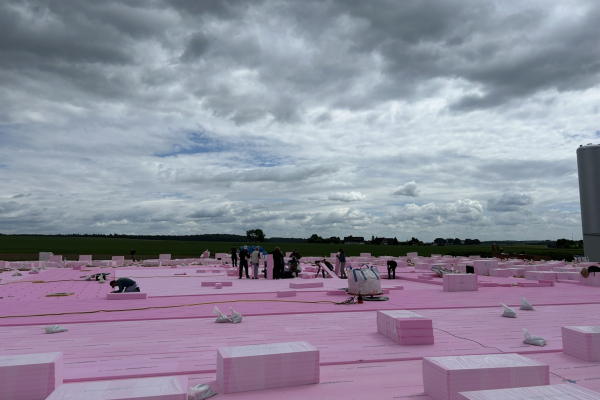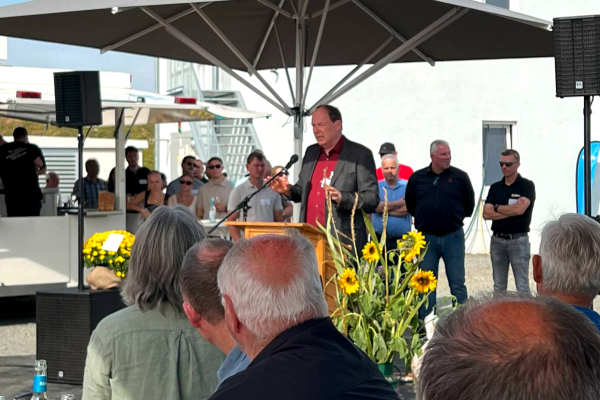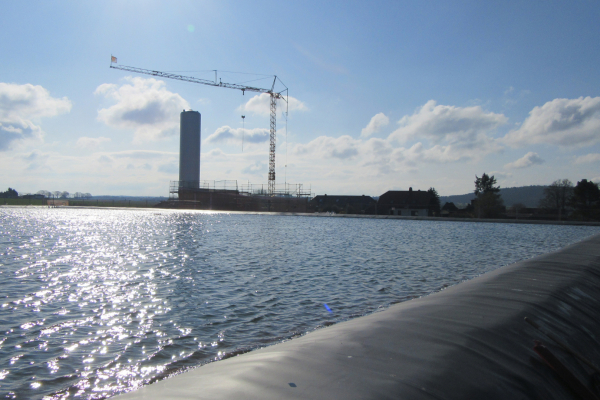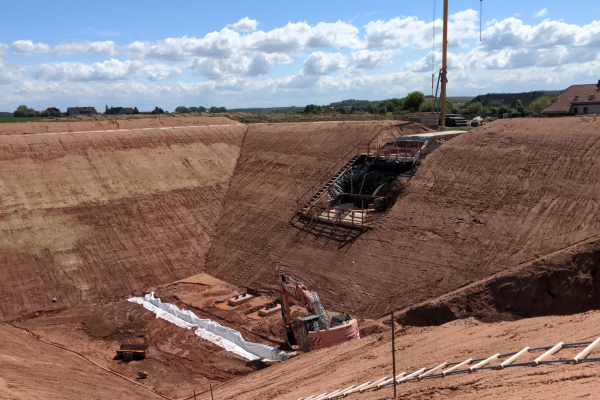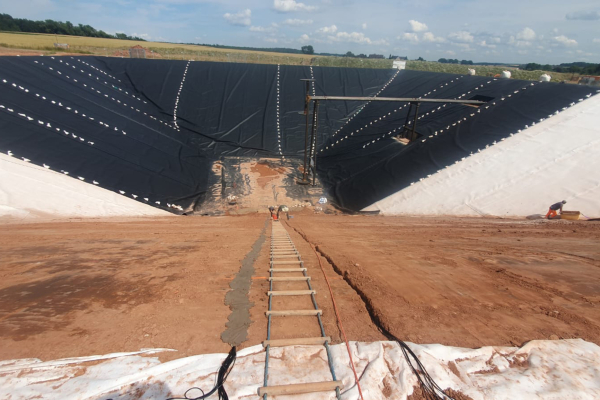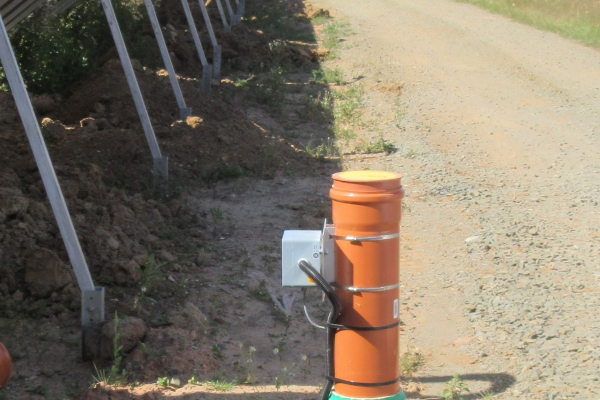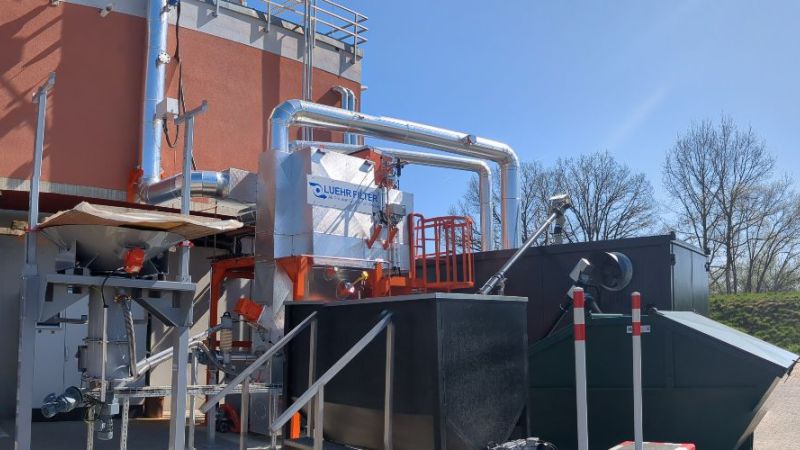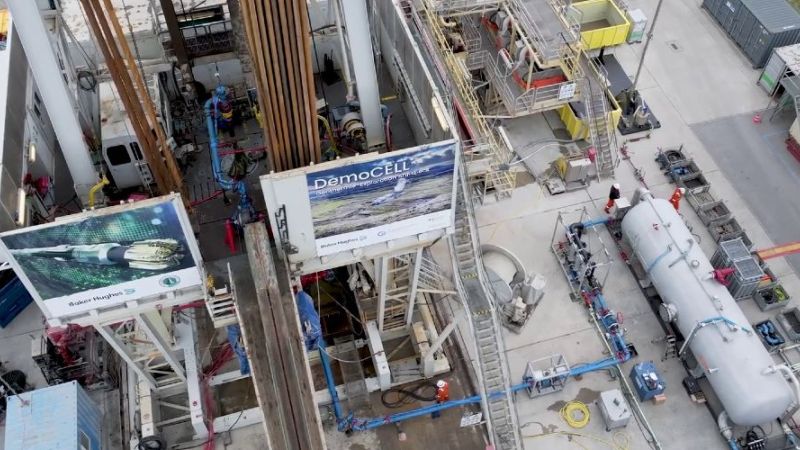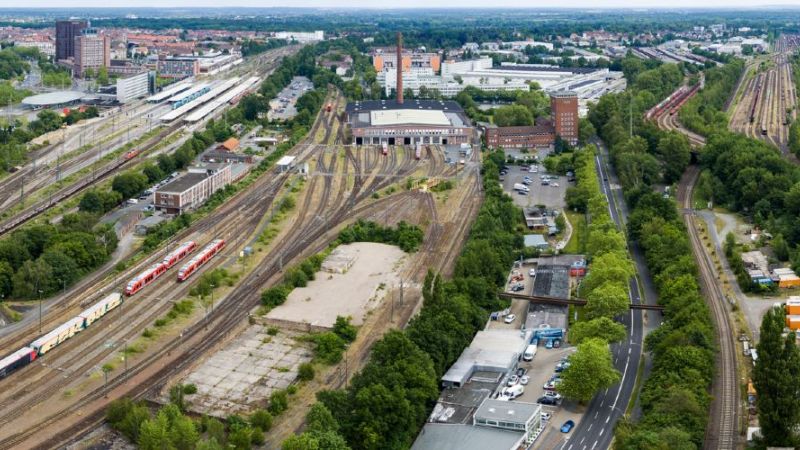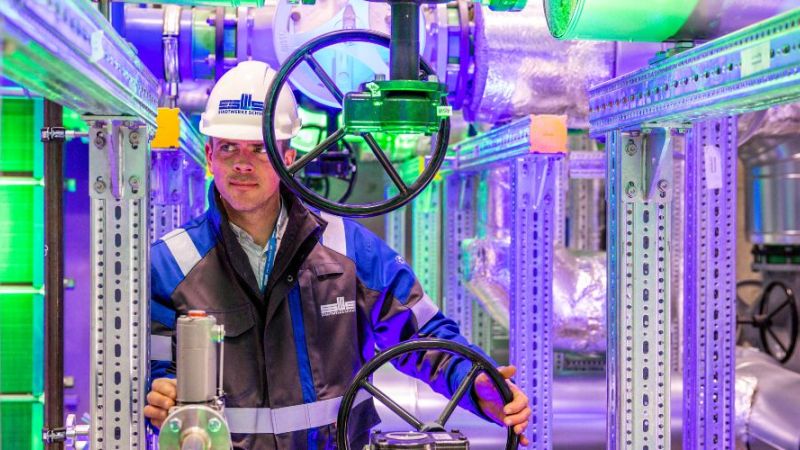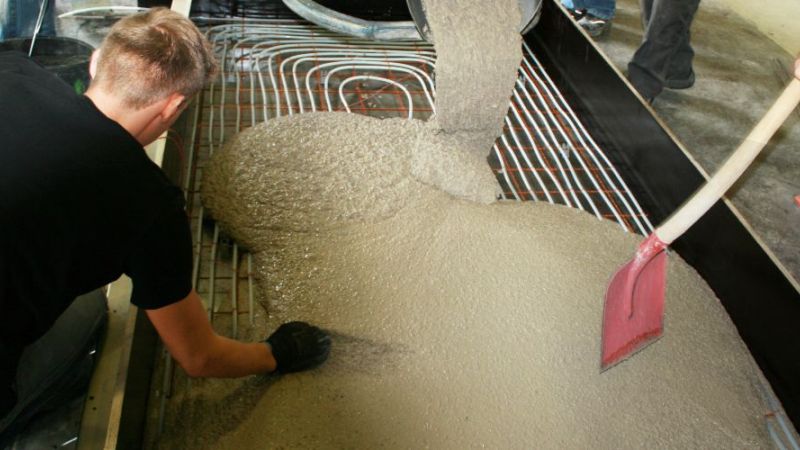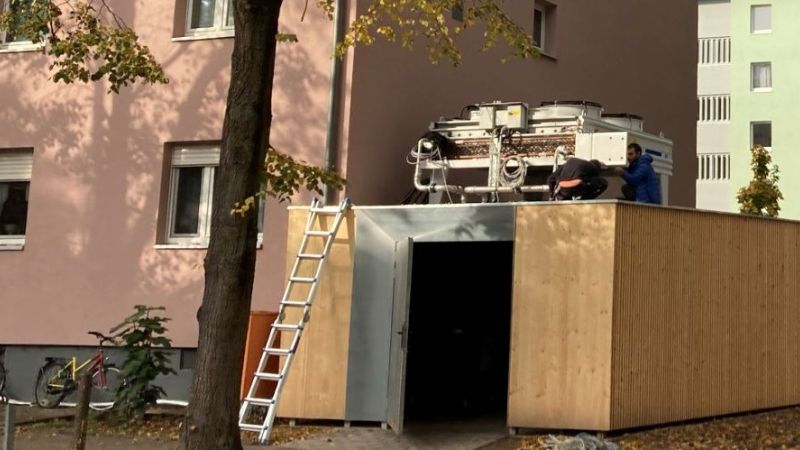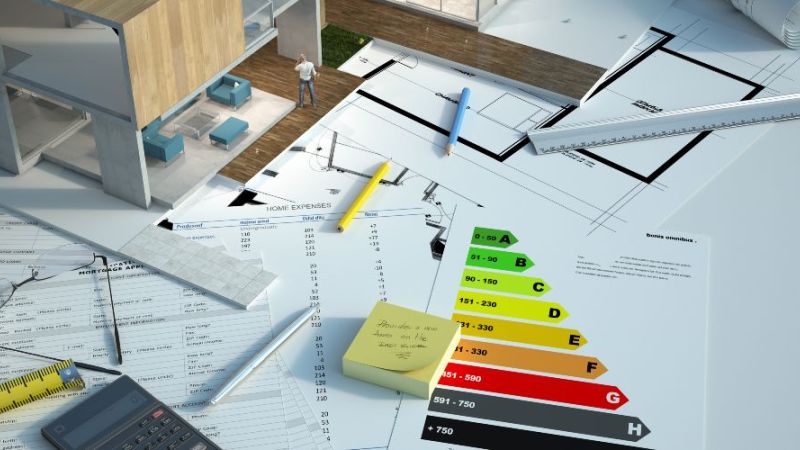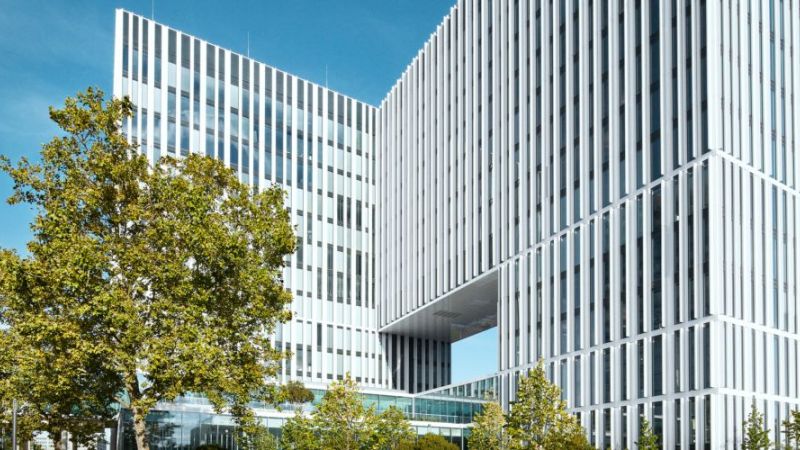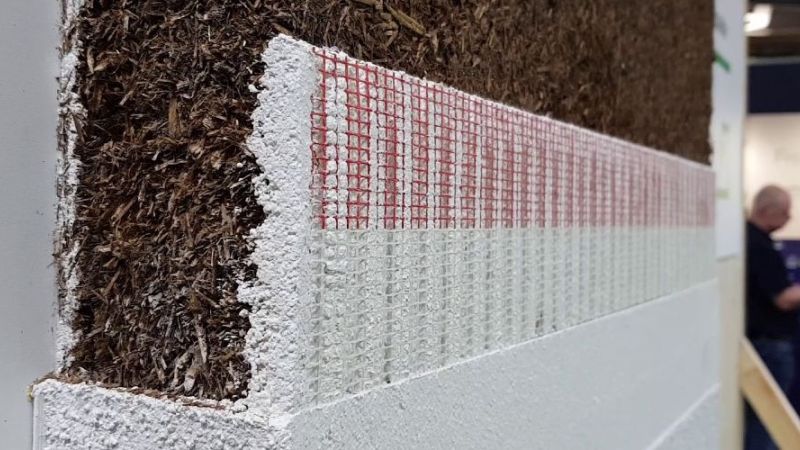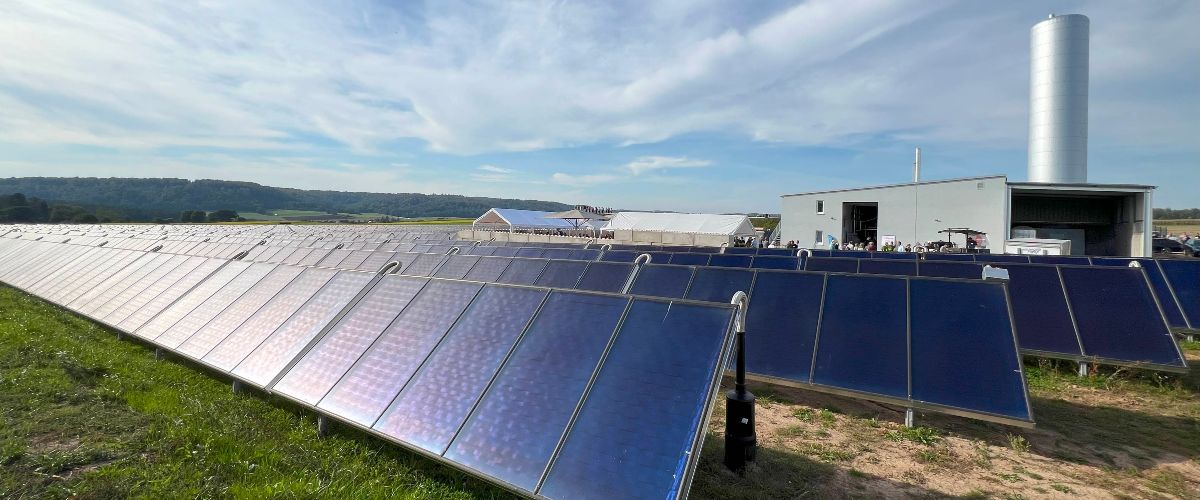 © University of Kassel, Department of Solar and Plant Technology
© University of Kassel, Department of Solar and Plant Technology
100 per cent renewable: Solar heat powers most of Bracht’s energy needs
A village in the German State of Hesse is setting new standards in the energy transition. In the district of Bracht, part of the town of Rauschenberg, a pioneering system has been commissioned that combines solar thermal energy, two heat pumps, a wood boiler and a large underground storage tank. It now supplies heat to 193 households – entirely from renewable energy sources.
Around 70 per cent of the heat output comes from 11,600 square metres of solar thermal collectors, combined with a 26,600-cubic-metre underground water storage tank. The remaining demand is met by a wood boiler, while two large heat pumps complete the system. ‘Supplying an existing village entirely with renewable heat – and predominantly from solar thermal energy – is unprecedented worldwide,’ says Prof. Klaus Vajen of the Institute for Thermal Energy Technology at the University of Kassel. He leads the accompanying research project, ruralHeat. Unlike conventional local heating networks, where solar energy typically accounts for only 20 to 40 per cent of demand, the system in Bracht is primarily solar-powered. ‘The remarkable thing,’ Vajen adds, ‘is that such a system can cut CO₂ emissions from a village’s entire heat supply by 98 per cent overnight. By comparison, with today’s rate of building renovation, it would take almost 200 years to upgrade every house individually – at roughly the same cost.’
60 per cent of residents on board thanks to ease and community spirit
In the heat transition, rural areas have so far focused mainly on energy-efficient renovations and individual heating solutions, such as heat pumps. Larger heating networks often fail in such settings because households are more dispersed than in urban centres. The solar heating network in Bracht, however, is designed for a comparatively small group of consumers. According to Professor Vajen, this approach offers clear advantages over comprehensive individual renovations. Village populations are typically older than average, the housing stock is often in poorer condition and in greater need of renovation, and property values tend to be below average.
‘All these factors discourage residents from carrying out extensive renovations – they postpone decisions and shy away from the expense,’ he explains. In a centrally organised project like Bracht’s, by contrast, each household faces a straightforward choice: connect to the network or not. For individuals, the effort required is lower, while the costs are comparable to other renovation measures. ‘With an active local cooperative, it is possible to convince most residents through social dynamics,’ Vajen reports. In Bracht, around 60 per cent of buildings are set to be connected to the local heating network.
A construction project built on volunteering
The construction project was largely carried out by the local cooperative, which was founded specifically to supply heat to the village. This would not have been possible without a significant amount of voluntary work: residents – many of them pensioners – even helped to build parts of the facility. Interested students also took part in constructing the storage tank, gaining hands-on experience of how simulations and real-world building processes intersect. The project thus serves as a teaching example for fostering young talent. Thanks to the commitment of everyone involved, very pragmatic solutions were possible, reports Vajen. Filling the storage facility, for instance, could not have been managed with the conventional water supply.
By purchasing 2.5 kilometres of fire hoses, a direct line was laid from the nearest well, allowing the tank to be filled within six months. Looking ahead, Vajen would like to see suitable funding opportunities if other villages wish to build similar systems: ‘At present, federal subsidies cover around 40 per cent of costs,’ he explains. This may be sufficient for existing heating networks that are expanded to include renewable sources. ‘But if I want to develop an entirely new project with a 100 per cent renewable heat supply, then that’s not enough.’
ruralHeat project supports cooperative in operation and regulation
The University of Kassel first laid the technical foundations for the complex system with a feasibility study. As part of the ruralHeat funding project, researchers are now providing scientific support during construction. Using simulations, they calculated and optimised the operation and control of the system, generating the key data for its design. ‘For example, we compared different system configurations to determine which worked best under different conditions,’ explains Vajen. Planning, installation, commissioning and troubleshooting all proved both demanding and exciting. The originally intended hydraulics could not be realised due to material availability, pipe lengths and diameters sometimes differed from expectations, and measuring instruments designed for soil had to be adapted for use in the water reservoir.
A sophisticated measurement concept with several hundred data points underpins the scientific support. At one stage, this even helped to avoid major costs. Stagnation protection had originally been budgeted at around €300,000, Vajen reports: ‘We calculated that this was unnecessary because, in combination with the large storage tank, the existing flat-plate collector field could also be used for cooling.’
Guidelines and design tool for local authorities and citizens’ initiatives in development
Just behind Rauschenberg-Bracht, the village of Rüdigheim – only 20 kilometres away – is also embarking on the path to becoming a solar village, with construction scheduled to begin later this year. Here, too, Professor Vajen and his team are providing scientific support. Data from both projects will flow into ruralHeat’s final evaluation. Across ten planned case studies, the researchers aim to determine the conditions under which these results can be transferred to other rural areas.
The outcome will be a web-based preliminary design tool that presents and compares different technological and energy management concepts for 100 per cent renewable local heating. It is designed to support local authorities and citizens’ initiatives in exploring their options and identifying the most suitable solutions for their communities. By offering a pre-selection of viable local heating approaches early in the planning process, the tool will help ensure that Bracht’s example can be replicated in many other places. (mb)
Note: The construction project is funded by the German state of Hesse.

